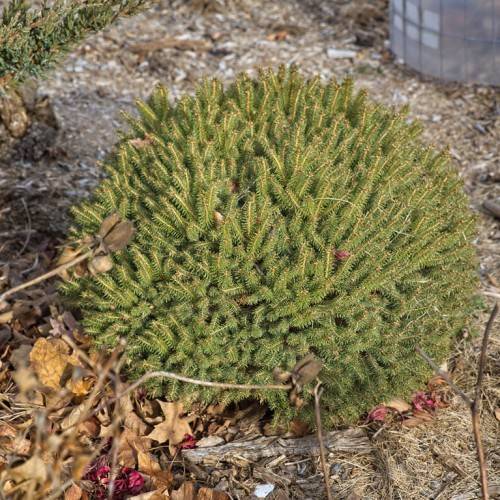
Norway spruce
Picea abies 'Witch's Brood'
Also Known As - Norwegian SpruceCycle:
Perennial
Watering:
Average
Hardiness Zone:
3
Flowers:
Flowers
Sun:
Full sun, Part sun/part shade
Soil:
Acidic, Well-drained
Cones:
Yes
Leaf:
Yes
Growth Rate:
High
Maintenance:
Low
Care Level:
Medium
watering
Norway spruce (Picea abies 'Witch's Brood') will need to be watered once a week to help keep the soil moist. Water until the soil is damp but not soggy, and water evenly around the pot. During the growing season, ensure soil is only allowed to dry out between waterings and is never overly dry, as this could cause the plant to become stressed. During winter, reduce watering to every 2 or 3 weeks as the plant will not require as much water to keep it healthy. Additionally, be sure to check the soil before watering, as overwatering can lead to root rot.
sunlight
Norway spruce (Picea abies 'Witch's Brood') prefers full sun, which means at least 6 hours of direct sunlight a day. This species of conifer does well in a variety of climates, but it fares best when planted in areas with direct sun during most of the day, especially during the hours of 9 AM to 3 PM. Different parts of the tree may require more sun than others, so it’s important to ensure that all branches get an adequate amount of sunlight by examining the crown. Placing the tree in the right spot is essential for its survival and health.
pruning
Norway spruce typically requires pruning every 3 to 5 years. Pruning should be done in late winter or midsummer, when the tree is dormant. The primary purpose of pruning is to thin out crowded branches and to remove any dead, diseased, or crossing branches. Pruning should also be done to improve the overall shape of the Norway spruce. For optimum results, it is important to prune out the central leader and shorter branches to help open up the tree's canopy and create a pleasing shape. Pruning should be done with sharp tools and make sure to make cuts away from the trunk and close to collar. Pruning should not be done excessively as it will slow growth and possibly damage the tree.
